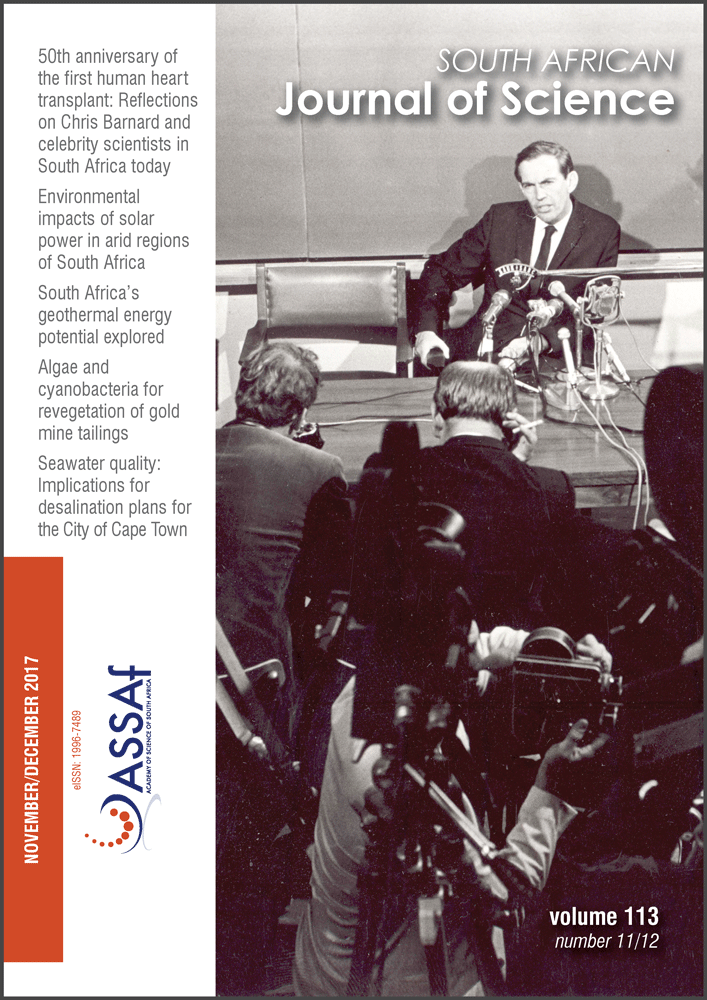The rise and fall of dissolved phosphate in South African rivers
DOI:
https://doi.org/10.17159/sajs.2017/20170020Keywords:
eutrophication, nutrients, fresh water, pollutionAbstract
Eutrophication of water resources following nutrient loading is a global threat to water quality, and has been found to be one of the major threats to water quality in South Africa. Eutrophication is large-scale autotroph growth following nutrient enrichment and has several consequences, including loss of biodiversity, oxygen depletion, taste/odour generation and algal toxin production. Phosphate enrichment is often (but not always) the cause of freshwater eutrophication, and limitation of phosphate is commonly used as a means of controlling eutrophication. This study reports on a survey of trends in nutrient levels in South African freshwater resources. The research reported on here shows a significant decrease in dissolved phosphate levels in recent years, following a long period during which phosphate levels had been increasing with time. While changes in inorganic nitrogen were found, these changes did not match those in phosphate levels. Several potential causes of these changes were assessed, and it is concluded that no one cause can explain the changes observed. While the decrease in freshwater phosphate levels bodes well for water quality management, internal phosphorus cycling and other mechanisms are likely to mask the short-term impact of phosphate decreases.
Significance:- Eutrophication, caused by nutrient loading, is a threat to water quality.
- Phosphate levels in South African fresh water have risen steadily with time, but recently have shown a sharp decrease, which cannot easily be attributed to one phosphate source.
- The decrease has promise for eutrophication management but changes may not occur in the short term.
Published
Issue
Section
License

All articles are published under a Creative Commons Attribution 4.0 International Licence
Copyright is retained by the authors. Readers are welcome to reproduce, share and adapt the content without permission provided the source is attributed.
Disclaimer: The publisher and editors accept no responsibility for statements made by the authors
How to Cite
- Abstract 974
- PDF 1806
- EPUB 273
- XML 296












.png)